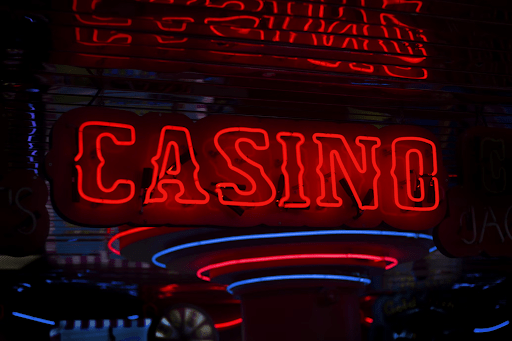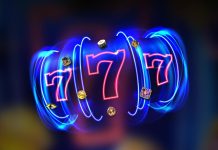
Slot machines have enthralled casino-goers for over a century, dating back to the late 19th century birth of the Liberty Bell machine. Their enduring legacy owes partly to the hypnotic allure of risk and reward with each spin. However much mystery has surrounded the inner workings of these casino cash cows. Myriad slot machine myths persist, obscuring the cold hard math determining each lucky spin or heartbreaking loss.
As slot machines have evolved from physical levers and reels to sophisticated digital offerings, their caretakers have mastered the art of calibrating payout percentages to maximize revenue. By leveraging an encyclopedic trove of player data, they tweak every facet of new slots, from bonus features to volatility indices, to attract customers.
Yet certain misconceptions around slot machine payouts and winning strategies refuse to loosen their grip on players. This confusion ultimately benefits casinos, like Lucky Vibe Casino, and game-makers but leaves many players frustrated. Here we unravel four prevalent slot machine myths with facts to deliver the unvarnished truth.
Myth 1: Slot Placement Impacts Payout Percentages
A common belief holds that casinos place higher-paying machines in prominent areas to attract players. Accordingly, slots located in high-traffic spots like near table games, aisles or cashier windows supposedly offer better odds.
Fact: Slot machine placement does not alter payout percentages Behind the scenes, all slots with the same game title, theme and denomination are programmed identically regardless of location. Their payout percentages derive from chips embedded in the game EPROMs. So a Double Diamond slot near the poker tables possesses the same pre-set RTP (return to player) as an identical machine in a darkened corner.
Table 1: Identical Slot Machines Programmed to Same Payout Percentages
| Game Title | Denomination | Location 1 Payout % | Location 2 Payout % |
| Double Diamond | $1 | 93.03% | 93.03% |
| Wheel of Fortune | $0.25 | 91.99% | 91.99% |
| Buffalo | $0.01 | 90.58% | 90.58% |
While high foot traffic slots may see more play, they offer no better odds. Their positions aim to catch passersby eyes and pull them in. Yet once seated, RTP rates remain fixed. Locals familiar with certain slots may perpetuate myths around perceived hot or cold machines. But over long-term play, expected payouts anywhere for identical games equalize.
Myth 2: Playing Maximum Coins Unlocks Bigger Wins
Another persisting myth states that wagering maximum coins unlocks enhanced payouts or jackpot prizes in slots. This assumption has roots in early mechanical slots, where playing maximum coins were required to possibly trigger bonuses and large prizes.
Fact: Modern slots deliver proportional payouts These days, sophisticated computerized slots calculate payouts as fixed percentages of coins played. So betting two coins on a slot with a 95% RTP will on average return 95 cents for every $1 wagered over extended play. Playing 20 coins will return $19 – or still 95%. So higher wagers translate to more money inserted and dispensed but odds and percentages remain stagnant.
Some slots still incentivize maximum bets through higher in-game bonuses. Yet proportionally, the RTP mathematically adjusts regardless of bet size. Higher bets still win bigger sums but face equivalent odds. Additionally many multi-line video slots today don’t have actual “maximum” bets due to their numerous payline combinations accepting variable wagers.
Myth 3: You Can Tell When Slots are “Hot” or “Cold”
Veteran slot players often claim an ability to gauge when machines hit hot and cold streaks. The idea suggests that observing recent payouts predicts impending wins or losses. After seeing a slot pay out large wins recently, some avoid it presuming it has gone cold. Meanwhile they flock to slots anecdotally labeled hot.
Fact: Each spin resets RTP calculations In truth, no intrinsic hot or cold cycles exist in modern computerized slots. Their programming utilizes RNGs (random number generators) cycling through countless combinations far too rapidly to forecast. Each spin resets calculations completely afresh. Technically, a slot could hit back-to-back jackpots or endure prolonged dry spells without impacting odds for the next spin. Over many thousands of spins, expected return rates even out but no temporary triggers alter underlying RTPs.
Table 2: Slot Machine Payouts Follow Laws of Probability
| Spin | Payout | Running Total Payout | Expected Payout % |
| 1 | $50 | $50 | |
| 2 | $0 | $50 | |
| 3 | $80 | $130 | |
| 4 | $20 | $150 | |
| 5 | $15 | $165 | 95% |
While observing certain slots may reveal short-term streaks, these represent natural statistical variance. Their past or present distributions cannot signal upcoming payouts in either direction. Each spin faces the identical RTP odds regardless of previous results.
Myth 4: You Can Improve Slot Odds with Strategies
From bankroll management to bet manipulating, no shortage of dubious slot strategies promise to outwit casinos. Players for years have sought schemes like playing faster and slower, spreading bets or timing stops. But no legal technical tricks can overcome slot machines’ mathematical foundations.
Fact: Slots function on chance alone Table games involve skill elements like blackjack basic strategy that can improve odds. But slots purely center on chance. Their designed RTPs and volatility ultimately govern results. Chasing losses or wins through betting patterns cannot overcome innate programming. The only “strategy” is choosing games with highest RTPs, maximizing comps through loyalty club memberships, and practicing bankroll discipline.
In Closing
Slot machines have come a long way from their early days featuring literal spinning reels and lever pulls. Today’s digital slots draw from vast databases of metrics to optimize every sound, symbol and feature for profitability.
This relentless fine-tuning aims to walk the line between eliciting player excitement and extracting earnings. But casinos also leverage the enduring mystique surrounding slot machine functionality to further tilt odds in their favor.
Peeling back age-old assumptions on payout cycles, positioning and lucky betting rituals reveals hardcoded mechanisms impervious to such external persuasion. By knowing slot machines simply combine predetermined odds with random number generators, players can make clearer-eyed decisions and manage expectations.




